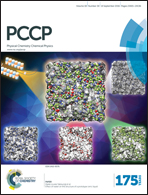Wetting dynamics of a water nanodrop on graphene
Abstract
Water–graphene wetting interactions are central to several applications such as desalination, water filtration, electricity generation, biochemical sensing, fabrication of fuel cells, and many more. While substantial attention has been devoted to probe the wetting statics of a water drop on graphene, unraveling the possible wetting translucency nature of graphene, very little research has been done on the dynamics of wetting of water drops on graphene-coated solids or free-standing graphene layers. In this paper, we employ molecular dynamics (MD) simulations to study the contact and the spreading of a water nanodrop, quantifying its wetting dynamics, on supported and free-standing graphene. We demonstrate that nanoscale water drops establish contact with graphene by forming patches on graphene, and this patch formation is hastened for graphene layer(s) supported on hydrophilic solids. More importantly, our results demonstrate that the nanodrop spreading dynamics, regardless of the number of graphene layers or the nature of the underlying solid, obey the half-power law, i.e., r ∼ t1/2 (where r is the wetting contact radius and t is the spreading time) for the entire timespan of spreading except towards the very end of the spreading lifetime when the spreading stops. Such a spreading behavior is exactly analogous to the spreading dynamics of nanodroplets for standard solids – this is in sharp contrast to the wetting statics of graphene where the wetting translucency effect makes graphene different from other standard solids.


 Please wait while we load your content...
Please wait while we load your content...